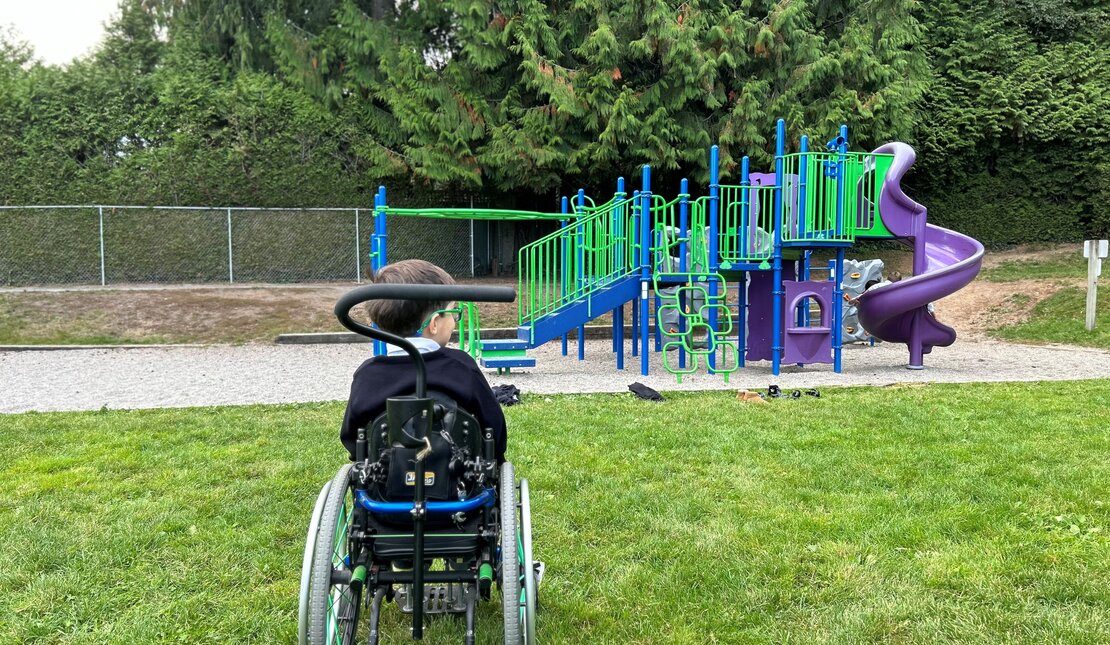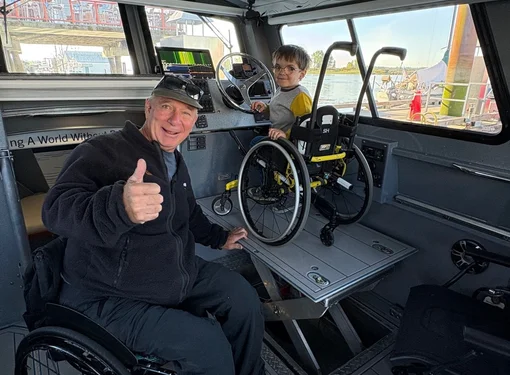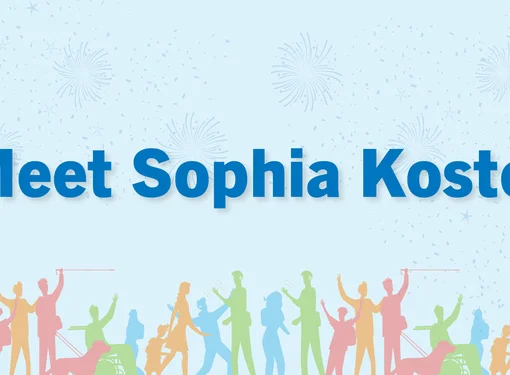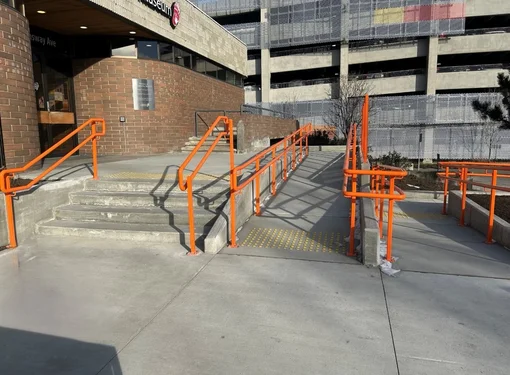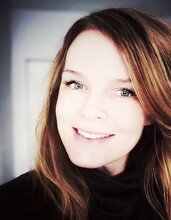A Mom's Mission to Make Recess Inclusive
At Unwin Park in Surrey, British Columbia, kids who use wheelchairs aren’t stuck on the sidelines. They’re right in the middle of the action, playing alongside everyone else. The 12,000-square-foot accessible space is so inclusive that children without disabilities understand how to engage with their peers with disabilities – out of acceptance, not obligation.
This was Carolina Miranda’s realization when she took her son Mateo to the park. He was just three years old at the time and eager to try the accessible merry-go-round, a flush-to-the-surface spinner that children of all abilities can use together. As he rolled into the circle in his wheelchair, a young boy already on the merry-go-round looked at Carolina and reminded her: “Make sure his brakes are on.”
Carolina was stunned. “It was such a beautiful moment,” she recalled. “It said so much about what happens when you create a space where all different types of kids can play together. It was clearly not the first time that boy had played with someone using a wheelchair. It was no big deal to him. And I thought, ‘this is it. This is what inclusion looks like.’”
Creating Inclusion in the Schoolyard
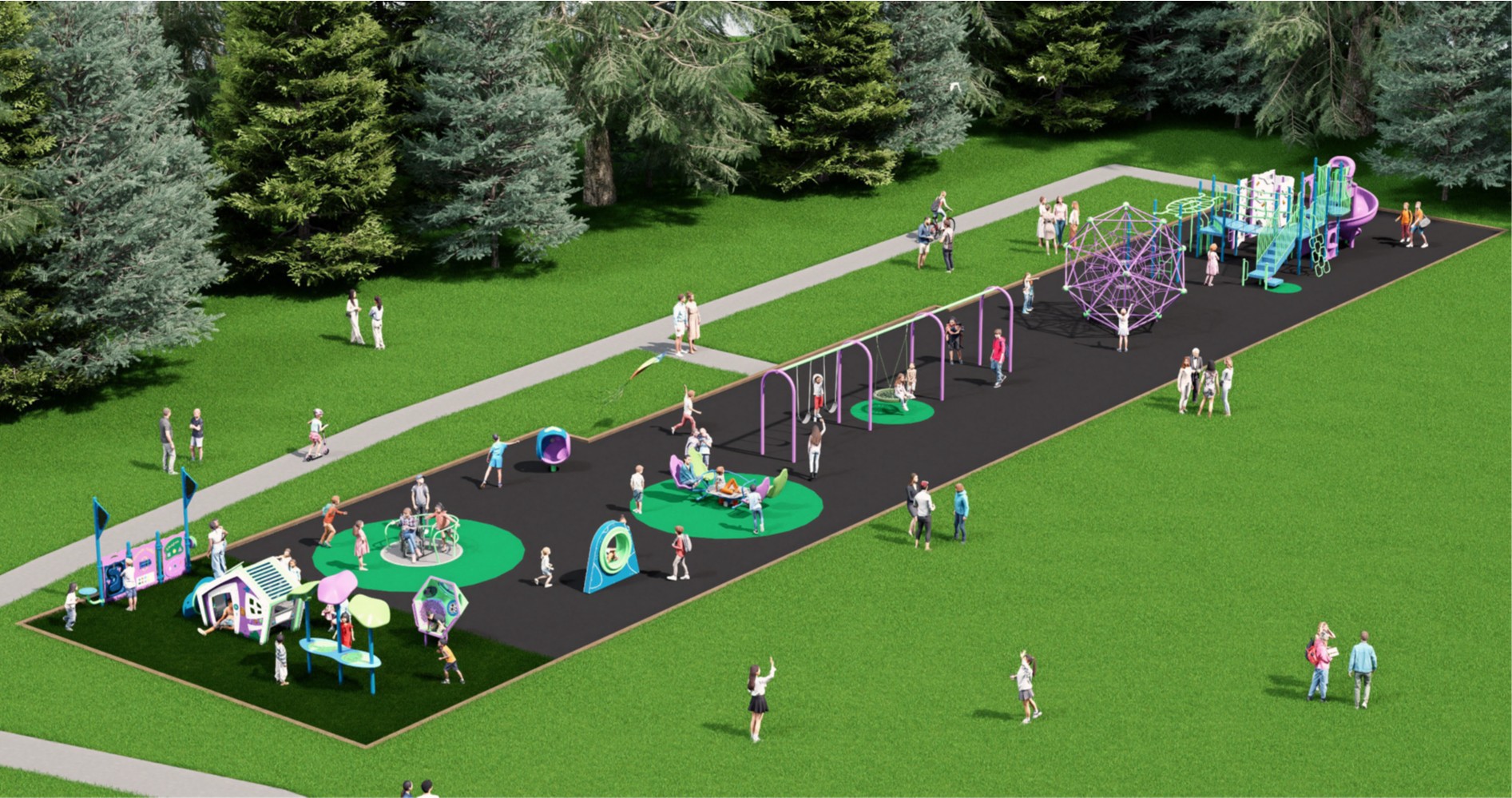
That moment stayed with Carolina. She decided that was going to be her next project: an accessible playground where all kids could play together at St. Anthony’s School in West Vancouver, where her son and daughter are students. It’s also the school Carolina attended as a child.
"Inclusive and accessible playgrounds weren't part of my vocabulary before Mateo. You don't know what you don't know," she said. "But once he got to the age where he wanted to play like the other kids, we started noticing the barriers. Playgrounds just aren’t made for kids like him."
The pea gravel, she says, is the worst. "They couldn't have come up with a worse surface. You're not getting any wheelchair or mobility device across that."
Carolina formed a Playground Committee with a few other incredible and dedicated parents and spent the next year rallying support. They partnered with the school, raised 100% of the funds, and helped select the final playground design. Construction is set to begin this summer, with the grand opening slated for the start of the school year in September.
The new playground design incorporates elements for all types of play, including a two-person swing with trunk support that appeals to all kids, a sensory wall, an accessible playhouse, and a smaller version of the in-ground merry-go-round that started it all. There will also be cozy cocoons for quiet play, artificial turf and rubber surfacing for wheelchair accessibility, and a broad age appeal suitable for Kindergarten through Grade 7. Elements of the old playground will remain because, as Carolina said, “It’s not about removing opportunities for kids who want to climb or jump. It’s about adding opportunities so that there is something for everyone.”
This work mirrors the mission of the Rick Hansen Foundation School Program (RHFSP), which supports educators and students with easy-to-use resources that help create disability awareness, an understanding of the importance of accessibility, and social inclusion. St. Anthony’s School occasionally uses RHFSP materials, and Carolina’s approach aligns with the program’s belief that creating inclusive environments from a young age shapes the way children perceive the world and one other.
"Accessibility benefits everybody and hurts nobody. Same with inclusion," she said. "This playground will enable my son to play with his friends, but it's also about the messages we're sending to all the other kids: everyone belongs."
Accessibility Is for Everyone
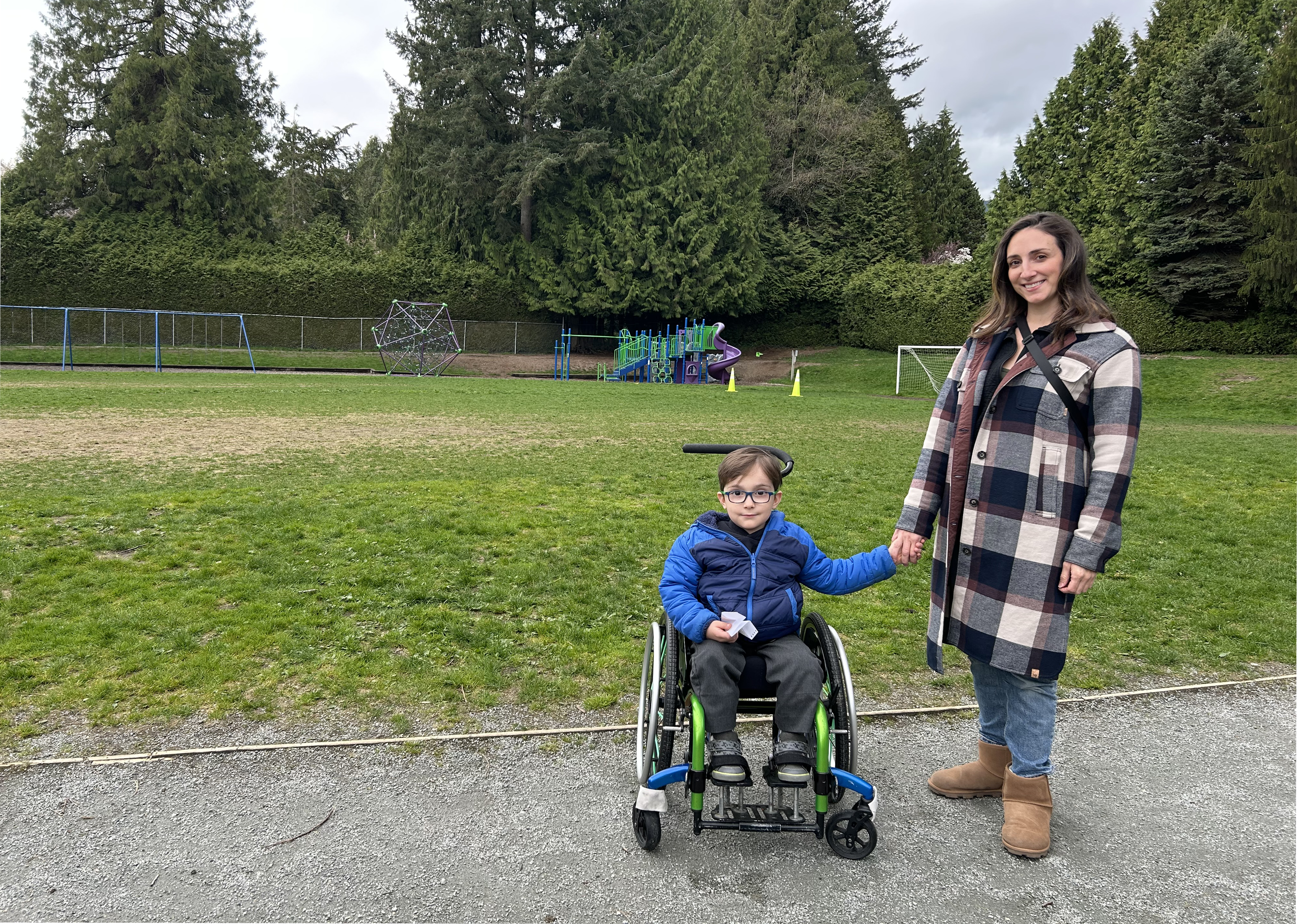
Not everyone initially saw the vision. "Some people asked, ‘Why are we spending all this money for one kid?’ But it's not just for this kid," Carolina said. "It's about his peers. It's about them having the opportunity to grow up with and play alongside someone like Mateo and see disability as just another form of diversity."
This kind of early exposure breaks down attitudinal barriers before they harden, she added. "None of the kids at the school will forget this. They're witnessing the change. They're having conversations at home that wouldn’t be happening otherwise."
And perhaps most poignantly, it's not just Mateo learning the language of accessibility. His five-year-old classmates are, too.
"These kindergartners have 'accessibility' in their vocabulary. It certainly wasn’t in mine at that age," Carolina said.
With the school playground project underway, Carolina hopes the lessons of meaningful accessibility will be shared. In a casual conversation with a West Vancouver employee, Carolina’s mother pointed out how Mateo and other kids with mobility challenges could not access the wooden pirate ship play structure at Dundarave Park. So, a platform was added. Then, an accessible merry-go-round and rubber surfaces were installed at Ambleside Park, also in West Van.
"We can't control the whole world, but we can change our corner of it,” Carolina said. “And once people understand what accessibility really looks like, they're usually receptive. They just need to see it."
She’s admittedly exhausted from the playground project but proud of what it accomplished.
"This project took everything I had. But it was worth it. Because now, Mateo will be able to play with his friends during recess. And his friends won’t have to choose between him and the swing. They can all play together."
And that is inclusion in action, not just talking about change but doing the work to make a difference for everyone.
